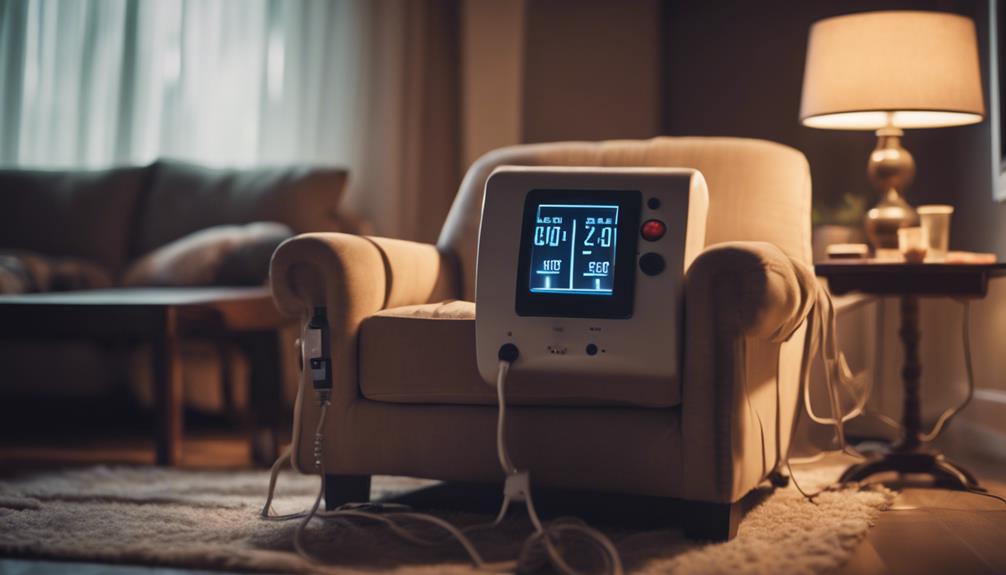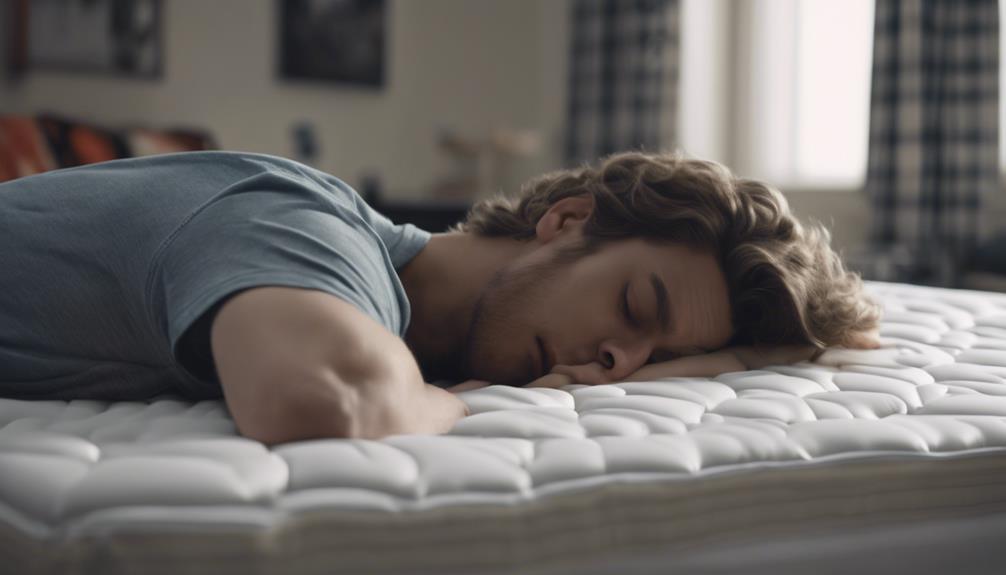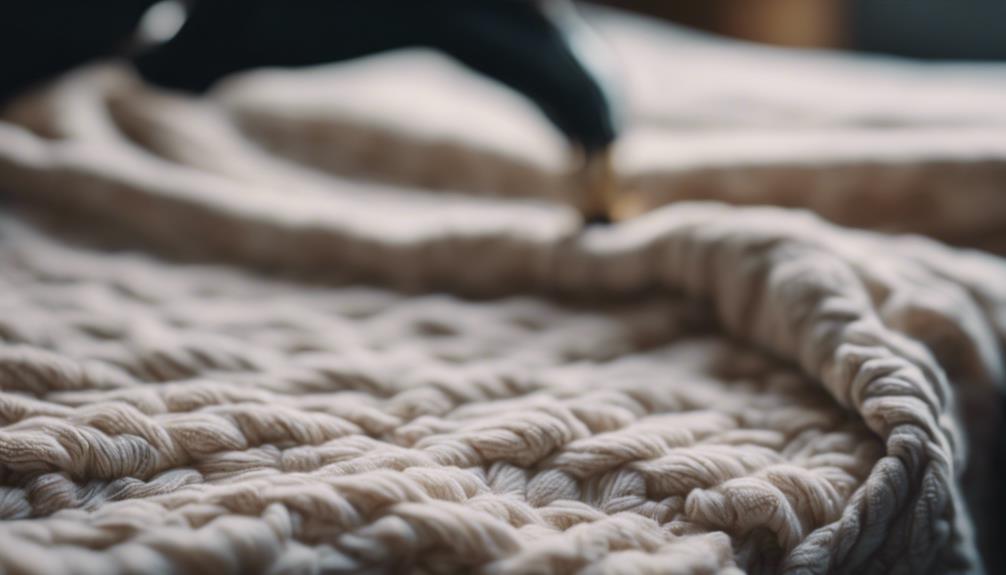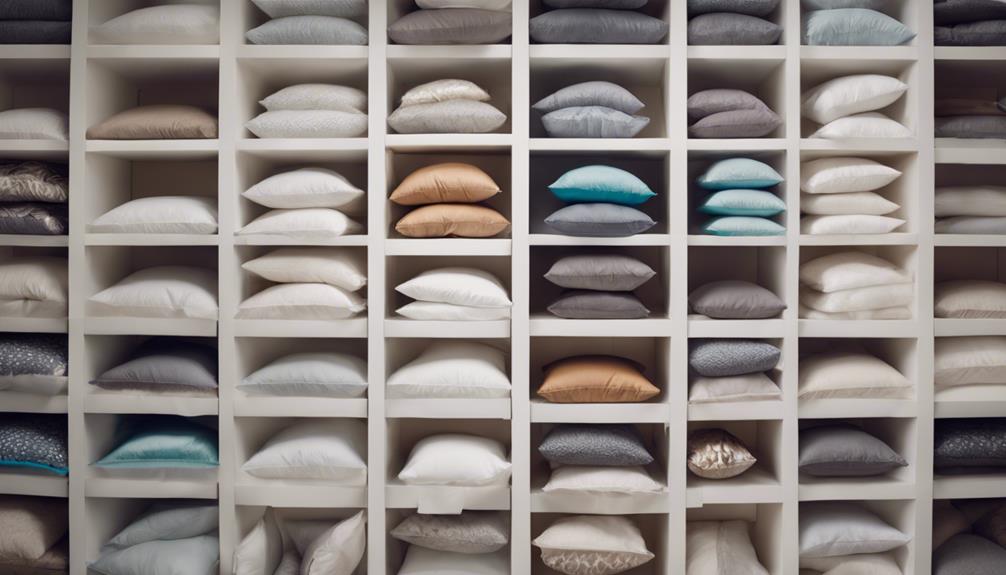Operating an electric throw usually costs between 2 to 4 cents per hour, depending on the wattage and frequency of use. It is crucial to comprehend these elements in order to accurately predict operational costs. Utilizing the throw efficiently, such as utilizing a timer and adjusting heat levels, can aid in saving electricity and cutting down on expenses. This cost-efficient heating option delivers both comfort and warmth while presenting notable savings in comparison to conventional heaters. To discover more tips on enhancing efficiency and decreasing operational expenses, delve into additional details on electric throw costs.
Key Takeaways
- Electric throws cost 2.7 to 4 cents per hour to operate.
- They offer cost-effective personal heating solutions.
- Usage for 6 hours daily may cost 6-12 cents.
- Understanding wattage and usage patterns is essential.
- Electric throws contribute to energy savings.
Electric Throw Cost Breakdown
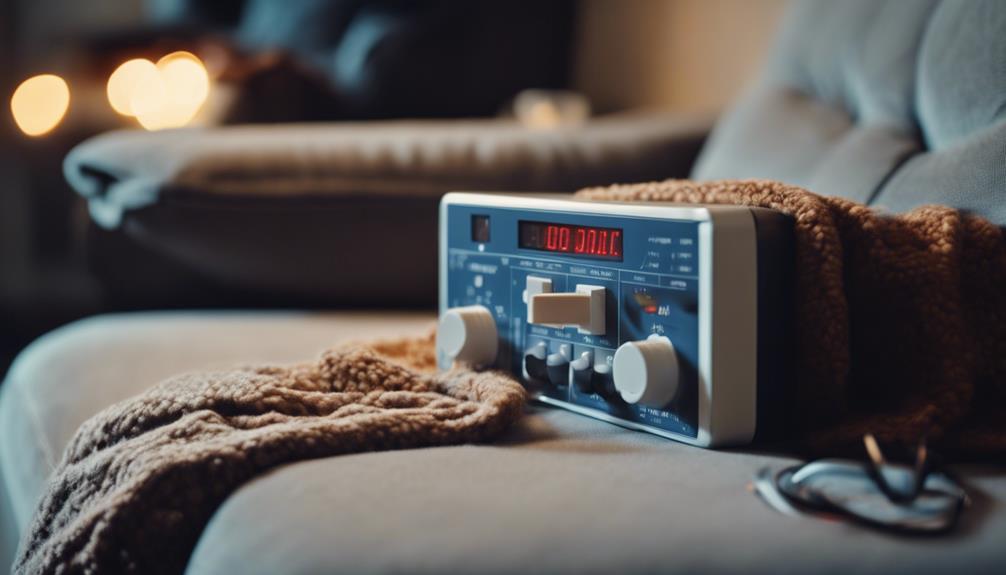
When evaluating the cost of operating an electric throw, it's important to consider the wattage, daily usage hours, and the price per kilowatt-hour. Electric throws typically consume between 50 to 100 watts per hour, translating to around 1 to 2 cents per hour to run.
By understanding these factors, one can calculate the daily expenses accurately. For instance, a 60-watt electric throw used for 5 hours at a rate of $0.10 per kilowatt-hour would cost approximately 30 cents per day.
Despite the low cost to run, electric throws provide targeted warmth and are energy-efficient, offering a cost-effective solution for personal comfort. By being mindful of power consumption and usage patterns, individuals can better estimate their electric throw's running costs, ensuring both warmth and affordability.
It's important to balance personal comfort with energy efficiency when considering the operational expenses of electric throws.
Operational Expenses of Electric Throws

Operating an electric throw incurs operational expenses typically ranging from 2 to 4 cents per hour based on the current electricity price. These operational expenses are quite affordable, considering the energy-efficient heating provided by electric throws.
With a power consumption of around 100 watts, electric throws offer a cost-effective heating option compared to other alternatives like room heaters. The targeted warmth they provide guarantees personal comfort without impacting energy bills to a large extent.
To better manage electric throw costs, understanding the wattage and usage patterns is essential for estimating running expenses accurately. By being mindful of usage frequency and duration, individuals can optimize their operational expenses while enjoying the benefits of cozy warmth.
Electric throws not only offer a practical solution for staying warm but also contribute to energy savings, making them a convenient and economical choice for enhancing comfort during colder seasons.
Calculating Electric Throw Running Costs
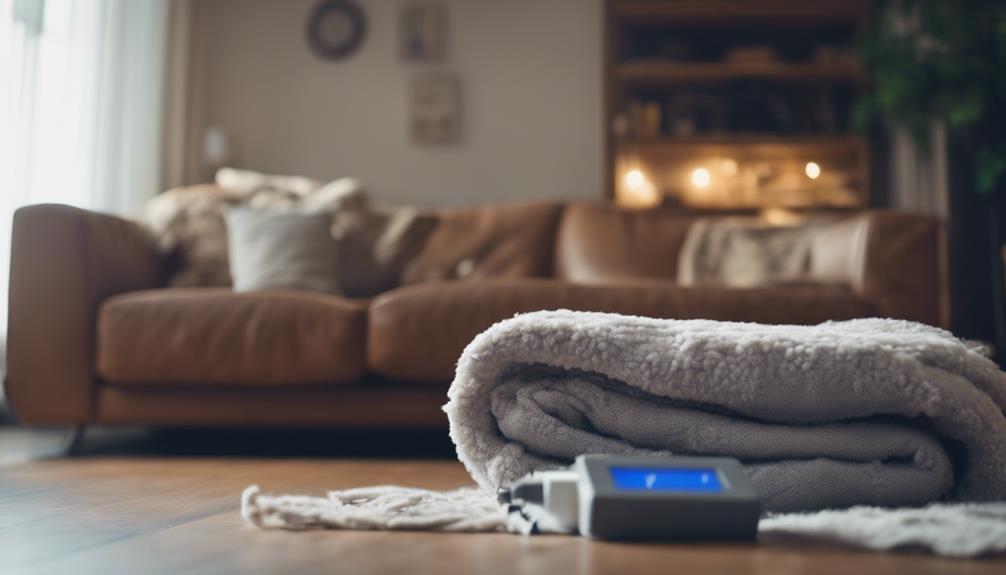
When calculating electric throw running costs, it's crucial to analyze the energy consumption and determine the cost per hour. Knowing the wattage of the throw, how long it will be used, and the electricity rate are key factors in estimating expenses accurately.
Energy Consumption Analysis
To accurately determine the running costs of an electric throw, one must consider factors such as the wattage, duration of use, and the electricity rate.
- Electric throws typically consume 100 to 150 watts per hour.
- Calculating the running cost relies on understanding the power consumption, duration of use, and electricity rate.
- Monitoring power rating and usage time aids in estimating daily or monthly expenses accurately.
- Electric throws offer a cost-effective way to stay warm while maintaining energy efficiency.
Cost per Hour
Calculating the running cost of an electric throw involves multiplying its wattage by the electricity rate per kilowatt-hour. An average electric throw with a wattage of 100W typically costs around 2.7p per hour to operate.
While electric throws are energy-efficient for personal warmth, they aren't suitable for heating entire rooms. Compared to space heaters or oil-filled radiators, electric throws offer a cost-effective heating option.
Understanding the cost per hour aids in managing expenses and selecting an efficient heating solution. Taking into account the wattage of the electric throw and the electricity rate to estimate running costs accurately.
Understanding Electric Throw Energy Consumption
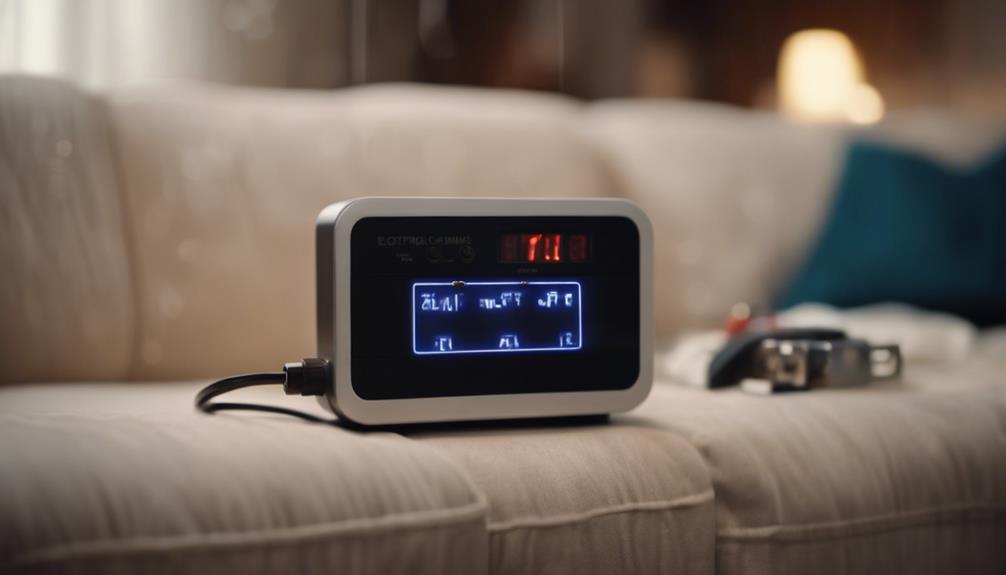
Electric throws typically consume 50 to 100 watts per hour, resulting in cost-effective heating solutions. With running costs ranging from 1 to 2 cents per hour, understanding energy consumption is essential for budget-friendly warmth.
Energy Consumption Breakdown
Understanding the breakdown of energy consumption for an electric throw is essential for gauging its efficiency and cost-effectiveness.
- Electric throws typically consume around 100 watts per hour, making them energy-efficient heating options.
- Higher wattage electric throws may have slightly higher running costs compared to lower wattage models.
- Running an electric throw for an hour costs approximately 1 to 2 cents based on the average electricity rate.
- Electric throws provide targeted warmth and comfort, making them cost-effective for personal heating needs.
Cost-Saving Tips
For efficient cost-saving with your electric throw, consider implementing smart energy management strategies. Electric throws typically consume 60-100 watts per hour, translating to around 0.6 to 1 cent per hour in running costs. Understanding the wattage of your electric throw and your electricity rate is essential for accurate cost calculations.
Opting for energy-efficient electric throws can help maintain warmth while keeping the impact on your electricity bill minimal. If used for 6 hours a day, running an electric throw can cost approximately 6-10 cents daily, depending on factors like wattage and energy rates.
Compared to other heating options, utilizing an electric throw proves to be a cost-effective way to stay warm and cozy.
Factors Affecting Electric Throw Expenses
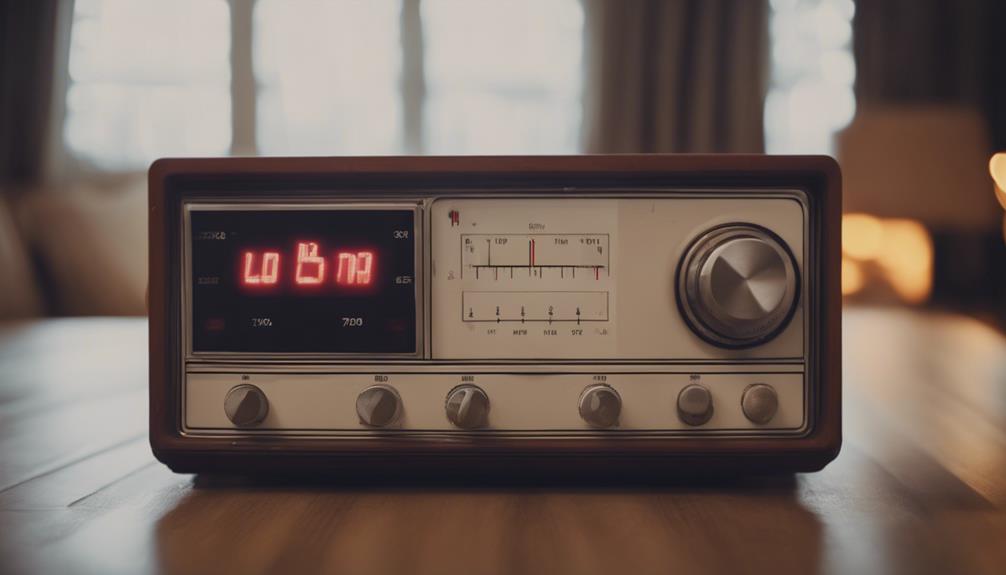
To effectively manage the expenses associated with running an electric throw, it's essential to take into account the wattage of the device. Here are some key factors affecting electric throw expenses:
- The wattage of the electric throw plays a significant role in determining its operating costs.
- Electric throws with higher wattage consume more energy, resulting in higher hourly costs.
- Understanding the wattage range of electric throws can help in estimating daily costs more accurately.
- Managing expenses related to electric throw usage involves calculating the energy consumption based on the wattage of the device.
Budgeting for Electric Throw Usage
When budgeting for electric throw usage, it's important to take into account the breakdown of usage costs and tips for saving electricity.
Understanding how the electricity rate, power consumption, and daily usage hours impact the overall expense is key.
Usage Cost Breakdown
How can we effectively budget for the usage cost breakdown of an electric throw? Understanding the wattage of the electric throw and your usage pattern is important for accurate cost estimation. Here are some key points to keep in mind:
- Wattage: Different electric throws have varying wattages, impacting energy consumption and running costs.
- Electricity Rate: The cost per kilowatt-hour influences the daily and monthly costs of running the electric throw.
- Daily Cost Calculation: Multiplying the wattage by the hours used and the electricity rate gives the daily cost.
- Monthly Cost Estimation: To determine the monthly cost, multiply the daily cost by the number of days the electric throw is used in a month.
Saving Electricity Tips
Let's discuss practical tips for saving electricity while using an electric throw, ensuring cost-effectiveness in our usage. To make the most of our electric throw while keeping running costs low, consider these strategies:
| Tips for Saving Electricity | Benefits |
|---|---|
| Set a timer for auto-shutoff | Prevents unnecessary usage |
| Use a lower heat setting | Reduces electricity consumption |
| Insulate with a blanket | Retains targeted warmth efficiently |
| Unplug when not in use | Eliminates standby power usage |
Efficient Use of Electric Throws

Using an electric throw efficiently can help maximize its cost-effectiveness while providing targeted warmth for personal comfort. To make the most of your electric throw, consider the following tips:
- Adjust the settings: By adjusting the heat settings based on your comfort level and the room temperature, you can optimize energy usage.
- Use a timer: Set a timer to automatically turn off the electric throw after you've fallen asleep or once you no longer need the extra warmth.
- Layer clothing: Pairing the electric throw with warm clothing or blankets can reduce the time you need to use the throw, saving on energy costs.
- Focus on personal heating: Instead of heating the entire room, focus the warmth of the electric throw on yourself for efficient and targeted heating.
Minimizing Electric Throw Operating Costs
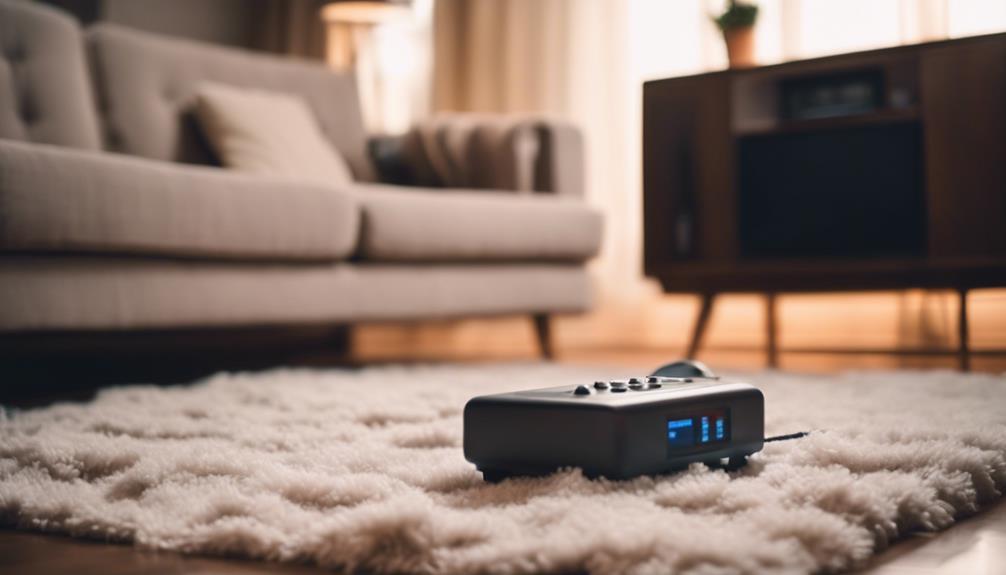
To reduce electricity expenses when running an electric throw, consider implementing energy-saving practices. Electric throws are an energy-efficient way to provide personal warmth and can help minimize overall heating costs. Compared to traditional room heaters that can be costly at 61p per hour, electric throws typically range from 2.7p to 4p per hour to operate, making them a more cost-effective option. Additionally, when compared to other heating methods like hot water bottles and space heaters, electric throws offer a cheaper way to stay warm during the winter months.
| Electric Throw Costs | Energy-Efficient |
|---|---|
| Heating Costs | Personal Warmth |
| Cost-Effective | Stay Warm |
Comparing Electric Throw Costs

When evaluating electric throw costs, one can easily see the significant savings they offer compared to traditional room heaters. Electric throws are a cost-effective heating solution that provides personalized warmth at a lower electricity cost.
Here are some key points to ponder:
- Electric throws typically cost around 2 to 4 cents per hour to run, based on an average energy consumption of 100 watts.
- Compared to other heating options like oil-filled radiators or electric heaters, electric throws are a more economical choice for targeted warmth.
- Understanding the wattage of an electric throw and its usage time can help estimate running costs accurately for budget-friendly heating.
- Electric throws are designed to be energy-efficient, providing comfort and warmth while minimizing energy usage.
Tips for Cost-Effective Electric Throw Use

For efficient use of an electric throw, consider adjusting the temperature settings based on your desired level of warmth. Electric throws typically consume 100-150 watts per hour, translating to 1-2 cents hourly. Running it for 6 hours daily may cost around 6-12 cents, depending on the electricity rate. Understanding the wattage and daily usage hours helps estimate running costs accurately.
These throws offer cost-effective personal heating, providing targeted warmth and comfort. Compared to space heaters, electric throws are energy-efficient and budget-friendly heating alternatives. To optimize cost-effectiveness, use the electric throw in conjunction with other heating sources to reduce overall energy consumption.
Additionally, insulating your home and using the throw in well-sealed rooms can help maintain warmth efficiently. By being mindful of usage habits and settings, you can make the most of your electric throw while keeping running costs low.
Frequently Asked Questions
Do Electric Throws Use a Lot of Electricity?
Electric throws don't use a lot of electricity compared to larger blankets. Their consumption ranges from 60 to 100 watts per hour, costing about 0.75 to 1.25 cents hourly.
Running for 6 hours daily can amount to 4.5 to 7.5 cents. These throws offer cost-effective personal warmth and are energy-efficient for targeted heating during activities like TV watching or reading.
Monitoring their usage helps manage electricity expenses effectively.
How Much Does It Cost to Run an Electric Throw per Hour?
Electric throws typically cost around 2.7p per hour to run based on the current 27p per kWh price-cap.
With a power rating of about 100 watts, they're perfect for personal warmth without heating up the whole room.
Compared to alternatives like hot water bottles or space heaters, electric throws offer a budget-friendly way to stay cozy.
How Economical Is a Heated Throw?
Heated throws are quite economical for personal warmth and comfort. They typically consume 100-150 watts per hour, costing around 1.5 to 2.25 cents hourly. This makes them a cost-effective option compared to heating an entire room.
For example, running a heated throw for 6 hours daily at 2 cents per kWh amounts to only 12 cents per day. Their localized warmth makes them a practical and budget-friendly choice for staying cozy.
Do Electric Blankets Increase the Electric Bill?
Electric blankets can lead to a slight increase in the electric bill due to their hourly cost of around 2-4 cents. However, their low wattage of approximately 100 watts makes them energy-efficient and cost-effective compared to other heating options.
While using electric blankets may raise the bill marginally, the overall expense remains affordable. The targeted warmth they provide consumes minimal electricity, offering personal comfort without significant financial impact.
What Factors Affect the Cost of Running an Electric Throw?
When considering the electric throw cost to run, factors like the size of the throw, its energy efficiency, and the local electricity rates should be taken into account. Larger throws and higher electricity rates can increase the overall cost of running an electric throw, while energy-efficient models may help lower it.
Conclusion
To sum up, the cost to operate an electric throw can vary depending on factors such as energy consumption and usage habits. By understanding these costs and taking steps to minimize expenses, users can enjoy the warmth and comfort of an electric throw without breaking the bank.
Remember, being mindful of efficient use and comparing costs can help save money in the long run.
So, stay cozy and cost-effective with your electric throw!
